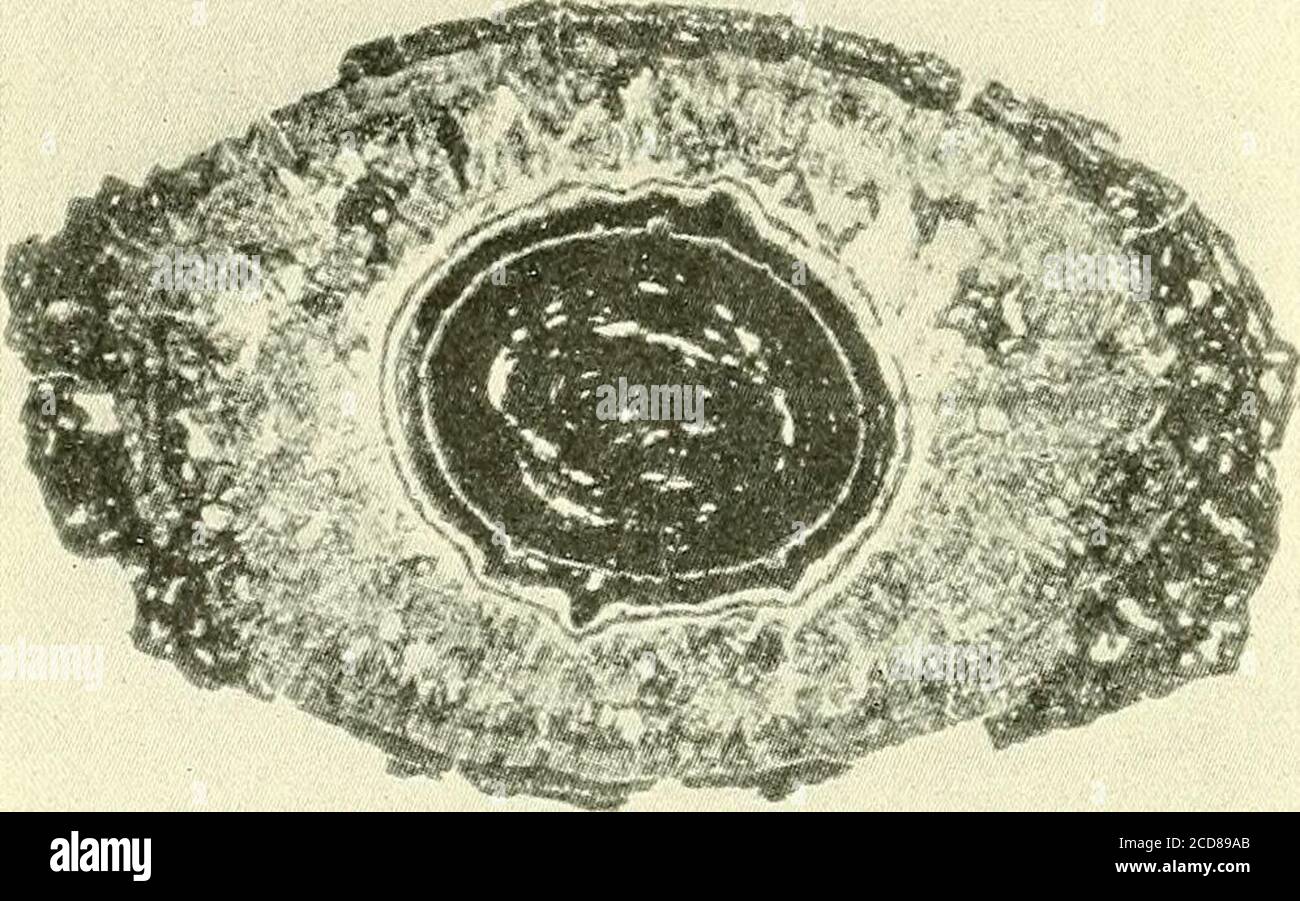. Surgery, its principles and practice . f oxalate of lime around it, and again outside of this a phosphaticlayer. If the calcareous parts are dissolved out of a stone, an albuminousmass is left which preserves the shape of the stone. This basic substanceexists in all calculi and serves as a framework in which the salts aredeposited. Cystin stones have less of this albuminoid basis than theother urinary calculi. The investigations of Rainey, Harting, Ord, Ebstein and others haveshown the importance of this mucoid skeleton or albuminous matrix inwhich the stone is deposited. These observers hav

Image details
Contributor:
Reading Room 2020 / Alamy Stock PhotoImage ID:
2CD89ABFile size:
7.1 MB (487.3 KB Compressed download)Releases:
Model - no | Property - noDo I need a release?Dimensions:
2000 x 1249 px | 33.9 x 21.1 cm | 13.3 x 8.3 inches | 150dpiMore information:
This image is a public domain image, which means either that copyright has expired in the image or the copyright holder has waived their copyright. Alamy charges you a fee for access to the high resolution copy of the image.
This image could have imperfections as it’s either historical or reportage.
. Surgery, its principles and practice . f oxalate of lime around it, and again outside of this a phosphaticlayer. If the calcareous parts are dissolved out of a stone, an albuminousmass is left which preserves the shape of the stone. This basic substanceexists in all calculi and serves as a framework in which the salts aredeposited. Cystin stones have less of this albuminoid basis than theother urinary calculi. The investigations of Rainey, Harting, Ord, Ebstein and others haveshown the importance of this mucoid skeleton or albuminous matrix inwhich the stone is deposited. These observers have shown that whencolloid or albuminoid substances are added to solutions of crystallinesalts a change takes place in the crystallization of these salts. Theydevelop in such media a tendency to deposit in spheroidal shapes and tocoalesce in rounded forms. This tendency was called by Rainey the lawof molecular coalescence, and the importance of it in controlling theformation of urinary concretions is obvious. 335 336 STONE IN THE BLADDER.. Fig. 184.—Section of Stone Having a Nucleus ofUrate of Soda, a Middle Layer of Oxalate ofLime, and an Outside Layer of Earthy Phos-phates (after Ultzmann). The albuminoid material necessary for stone formation may be sup-plied by pus, blood, or by bits of necrotic tissue. As these materials aresupplied by the walls of the urinary passages, it would seem that someirritation of these passages must precede the formation of a calculus. If granulation tissueforms in the bladder, itssurface secreting albuminousmaterial is a favorable nidusfor the deposit of calcareoussalts. The surface of atumor acts often in a similarway to set in operation theformation of a stone. The concretion whenstarted acts as an irritant tothe bladder wall and so con-tinues to be supplied withan albuminoid envelope inwhich successive layers ofspheroidal crystals are de-posited. On a cross-sectionof a stone may be seen theconcentric layers of which it is composed. The compac